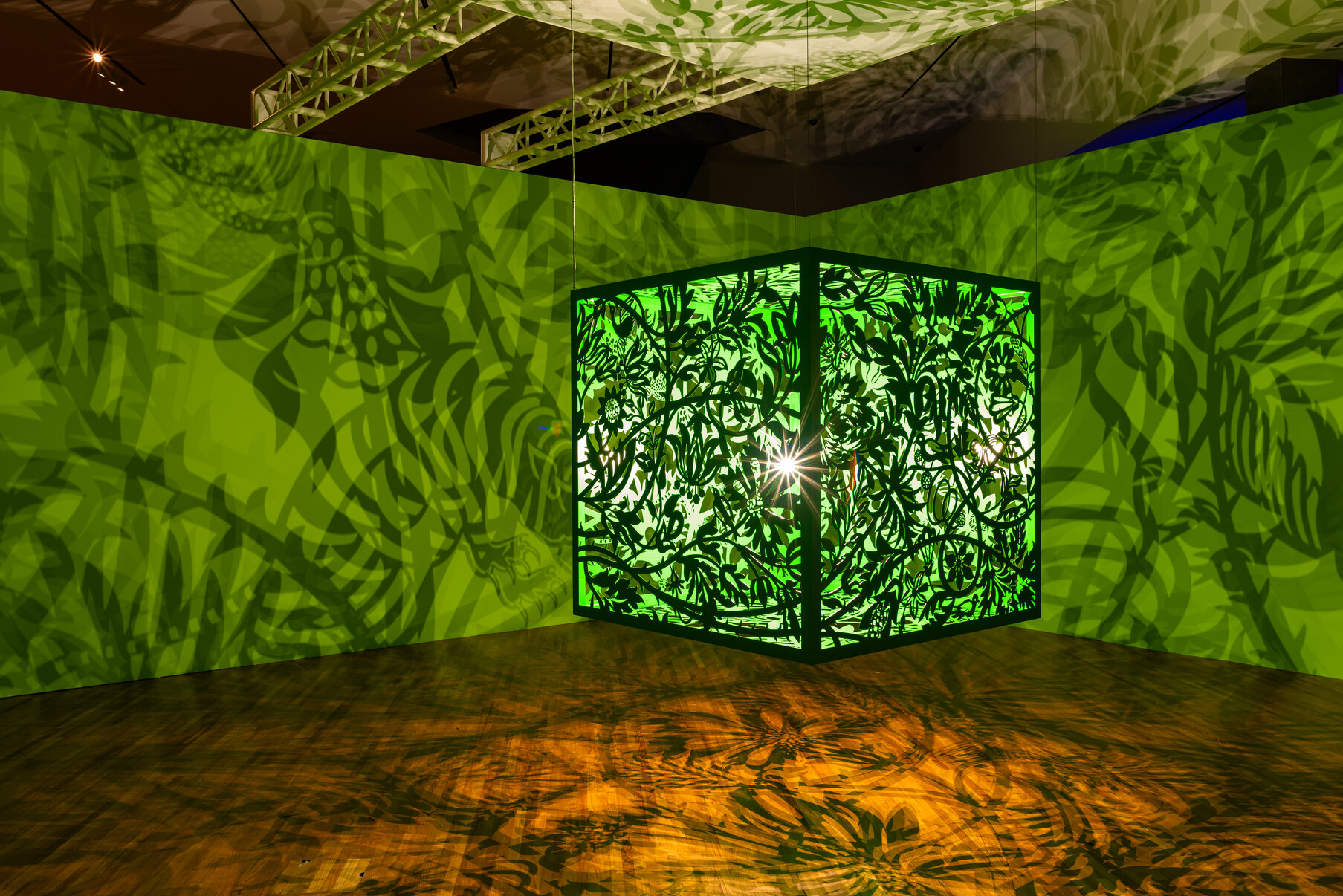by Roy Bernardi
Henry Moore (30 July 1898 – 31 August 1986) was an English artist. He is best known for his semi-abstract monumental bronze sculptures which are located around the world as public works of art. His sculpture style was significantly influenced by his experience as a soldier in World War I. Moore also produced many drawings, including a series depicting the Second World War, along with other graphic works and studies on paper.
Marino Marini (27 February 1901 – 6 August 1980) was an Italian sculpture and educator. He initially trained as a painter in Florence before transitioning to sculpture. While he continued to engage in drawing and painting, Marini focused mainly on sculpture starting around 1922. Known for his figurative sculptures, particularly the “horse and rider” theme, which he explored throughout his career. In 1929, he took over from Arturo Martini as a professor at the Scuola d’Arte di Villa Reale in Monza, close to Milan, Italy, a role he held until 1940.
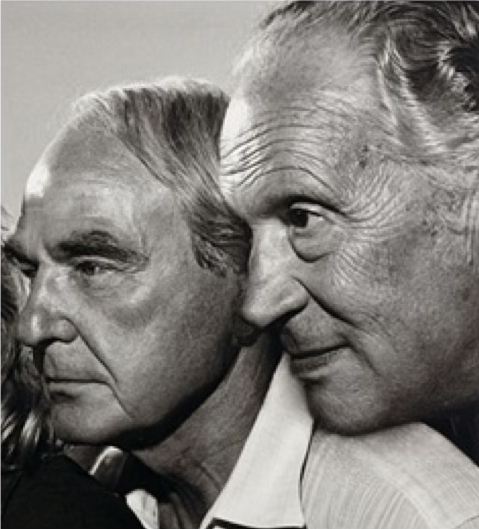
Henry Moore and Marino Marini were introduced in 1951 by the New York art dealer Curt Valentin, leading to a significant friendship that endured throughout their careers. They often met along the Tuscan coast in Italy during the 1960s and 1970s, where Marini lived and Moore had a vacation residence. Both artists sought to revisit and modernize the European sculptural tradition, which Tuscany offered many exceptional examples. They shared numerous creative interests and held deep admiration for one another. Together, they cultivated a network of friendships and professional relationships with notable artists and intellectuals, including Jean Arp, Max Beckmann, Salvador Dali, Alexander Calder, Yves Tanguy, Lyonel Feininger, Alberto Giacometti, and Jacques Lipchitz.
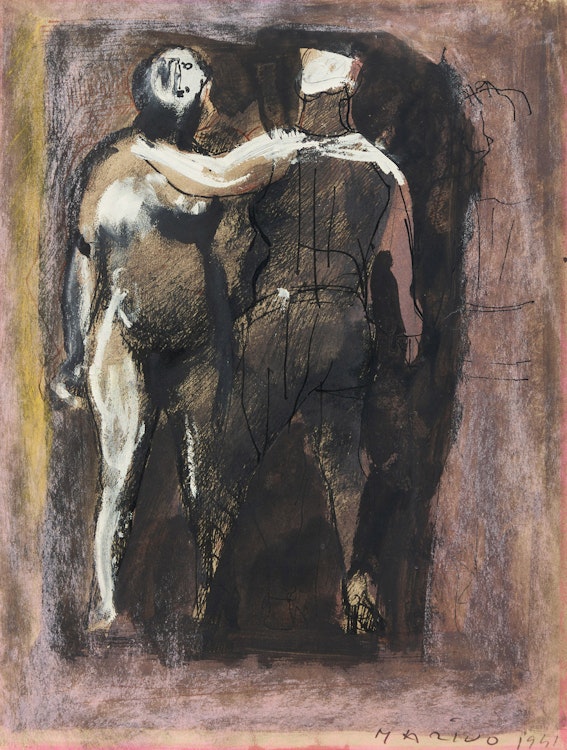
It is intriguing to note that both artists subconsciously exhibited remarkably similar artistic styles in their drawings, particularly in their early drawings from the 1940s. Their drawings predominantly focused on potential sculptural figures, as demonstrated in the drawings presented here. The figures in Marini’s Due Figure from 1941, created with oil, tempera, pen, India ink, brown ink, and pastel on paper, and Moore’s Draped Standing Figures in Red from 1944, executed in pencil, ink, wax crayon, and watercolour, reveal a striking resemblance when placed side by side. Both artists are utilizing mixed media materials on paper of comparable dimensions. It is clear that these illustrations depict figures arranged as non-objective prospective subjects in a sculptural context. The Vatican Museum contains a small drawing by Moore and features a collection specifically focused on Marini’s early works on paper.
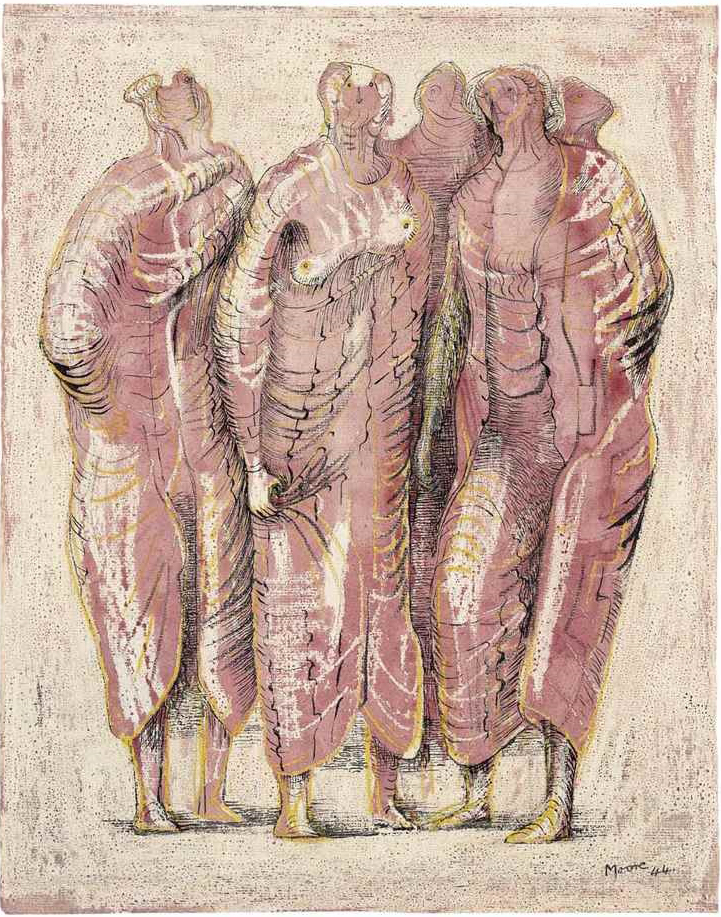
Two talented artists who unknowingly shared a strikingly similar artistic journey in their early works. Both artists hailed from different backgrounds (Marini from Italy, Moore from England) but found their calling in the realm of art, showcasing unique perspectives and creative flair in their works on paper. From a young age, these artists displayed a natural inclination towards art, doodling on any surface they could find and immersing themselves in colours and shapes that ignited their imagination. Haunted by the war and the suffering of civilians he observed during the bombings, Moore’s artistic themes were significantly shaped by these experiences. Meanwhile, Marini’s artistic style underwent a transformation due to the war, moving away from the smoother, classical forms of his earlier works towards a more jagged, Expressionist style that reflected his anxieties and disillusionment with humanity in the aftermath of the war.
Combining the enigmatic allure of artistic expression with the intricacies of the subconscious mind, the intriguing parallels between two renowned artists’ early works have captivated art enthusiasts and scholars alike. It’s a fascinating intersection of creativity, influence, and individual style as these artists, perhaps unknowingly, manifested remarkably similar artistic techniques in their works during the formative stages of their careers. Through a journey of discovery and analysis, we can unravel the threads that connect these artists’ early artistic endeavours, shedding light on the subconscious forces at play in shaping their distinctive visual languages.
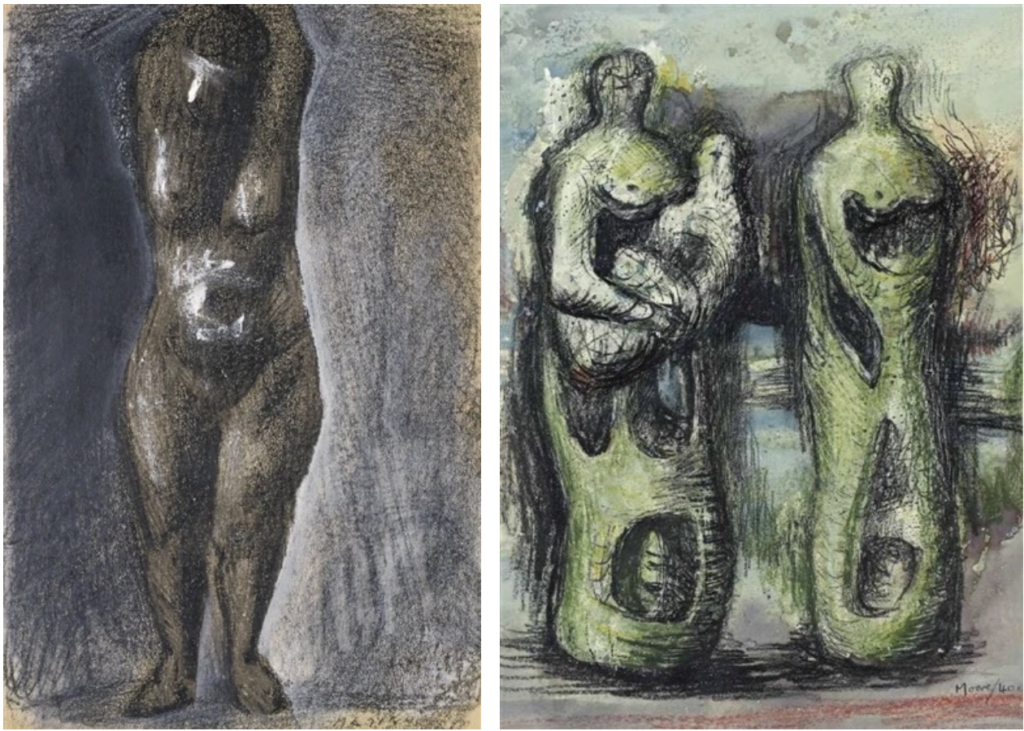
Despite their unique perspectives, these artists often incorporated similar elements in their compositions, from the arrangement of subjects to the harmonious blend of colours that evoked a sense of unity and cohesion in their artworks. It is intriguing to explore how unconscious influences, such as personal experiences, emotions, and cultural backgrounds, may have shaped the artists’ early artistic expressions. Delving into the depths of the subconscious unveils a rich tapestry of inspiration within their works. They collectively transformed classical sculpture into a more figurative semi-abstract style that aligned with contemporary trends.
They shared a profound admiration for Michelangelo’s sculptures, particularly David (1501-1504) and Pietà (1498-1499), the latter illustrating Mary holding the lifeless body of Jesus after the Crucifixion. Both masterpieces were crafted from marble extracted from the nearby Carrara quarries. Notably, the Pietà is distinguished as the only artwork that Michelangelo ever signed. On 21 May 1972, this sculpture, located in St. Peter’s Basilica in Vatican City, suffered damage when a mentally unstable geologist, originally from Hungary and residing in Australia, entered the chapel and assaulted the statue with a geologist’s hammer, proclaiming, ‘I am Jesus Christ; I have risen from the dead!’.
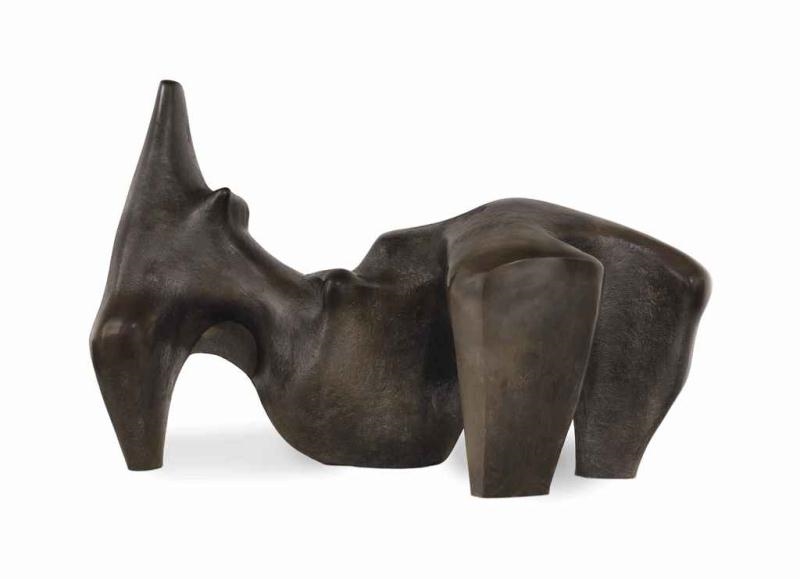
On the 15 December, 2005, a bronze statue by Moore, entitled Reclining Figure (1969-1970), depicting an abstract female figure, lying on her back with her legs raised and feet grounded, supported on one arm and resting on her hip. Valued at £3 million, was stolen from the courtyard of the Henry Moore Foundation located in Perry Green, Hertfordshire, England. The sculpture which weighed 2.1 tons and measured 3.6 metres in length was lifted using a crane and transported away on a flatbed truck. It is believed that the statue was melted down and sold for £5,000 as scrap metal. Six casts of the reclining figure were created in total.

Marini’s sculpture titled The Angel of the City (1948) a seminal work by the Italian artist depicts a nude man sitting with outstretched arms on a horse. There are castings on display at the Peggy Guggenheim Collection in Venice, as well as the J. Paul Getty Museum in Los Angeles. This piece was one of Fallingwater, Pennsylvania, USA’s most prominent pieces of art lost during a flood at Bear Run Nature Reserve in August 1956. The sculpture was part of the Kaufmann family collection and was lost for years until found in fragments in August 2009.
Both artists achieved global recognition during their careers, showcasing their art work at prominent museum exhibitions and receiving numerous accolades worldwide for their work. Both are in collections with works in hundreds of galleries, museums and public spaces throughout the world.
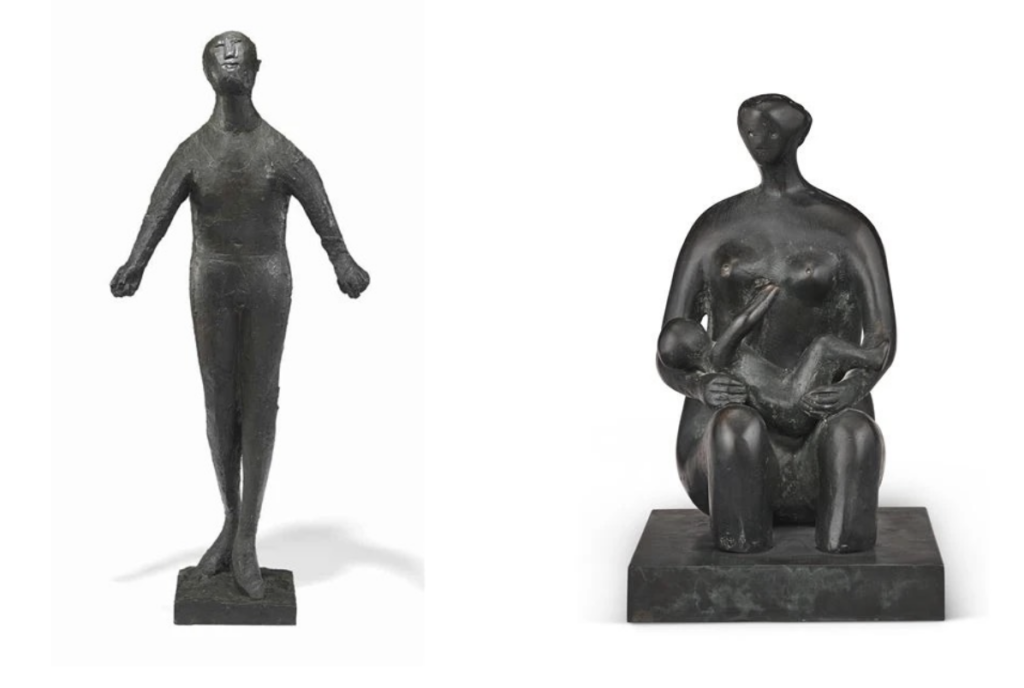
The Art Gallery of Ontario (AGO) located in Toronto, Ontario, Canada, is home to the world’s most extensive public collection of Henry Moore’s art, encompassing sculptures, maquettes, and works on paper, largely donated by the artist himself during the years 1971 to 1974. The Henry Moore Sculpture Centre was inaugurated at the AGO in 1974 to showcase Moore’s original donation and has since become a landmark in Toronto.
The Marino Marini Museum, located in Florence, Italy, is dedicated to the artist’s legacy and creations. Occupying the former San Pancrazio Church, the museum displays a rich collection of Marini’s sculptures, paintings, and drawings, offering valuable insights into his artistic progression and journey.
